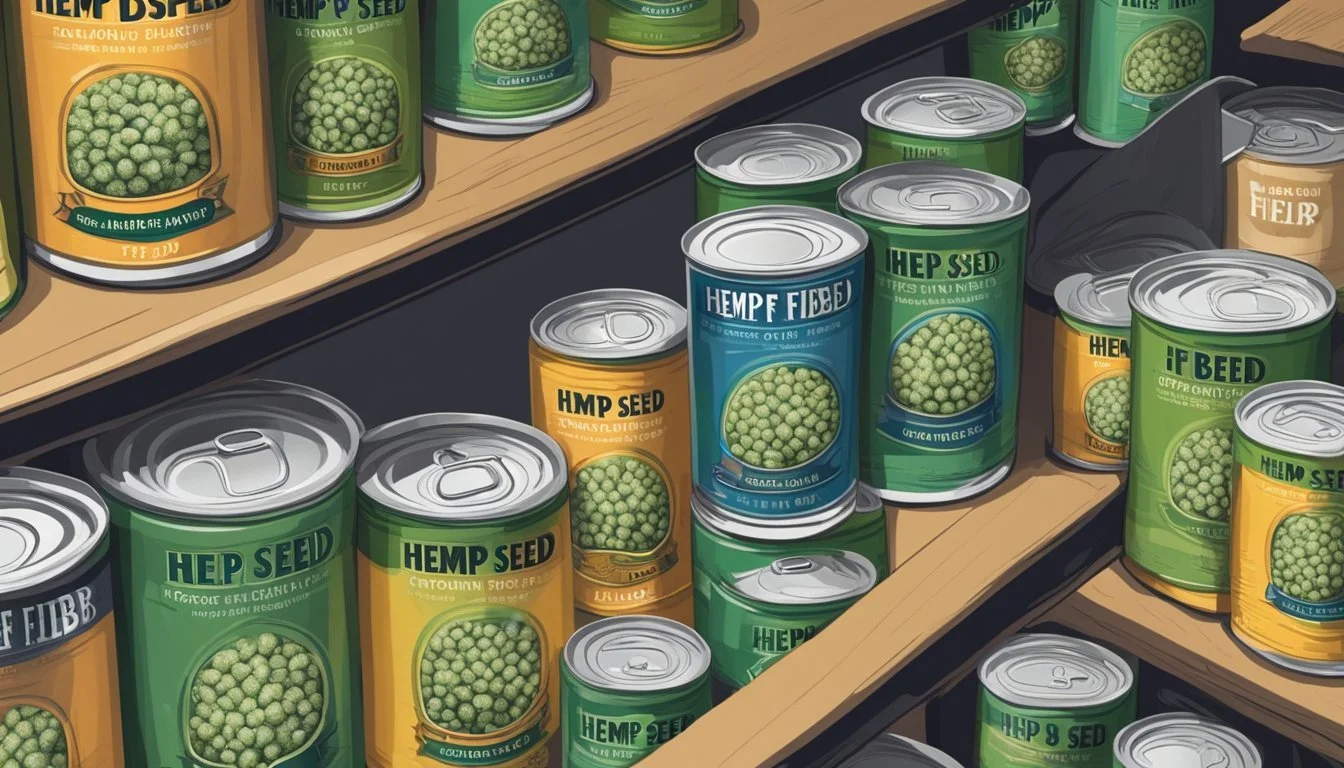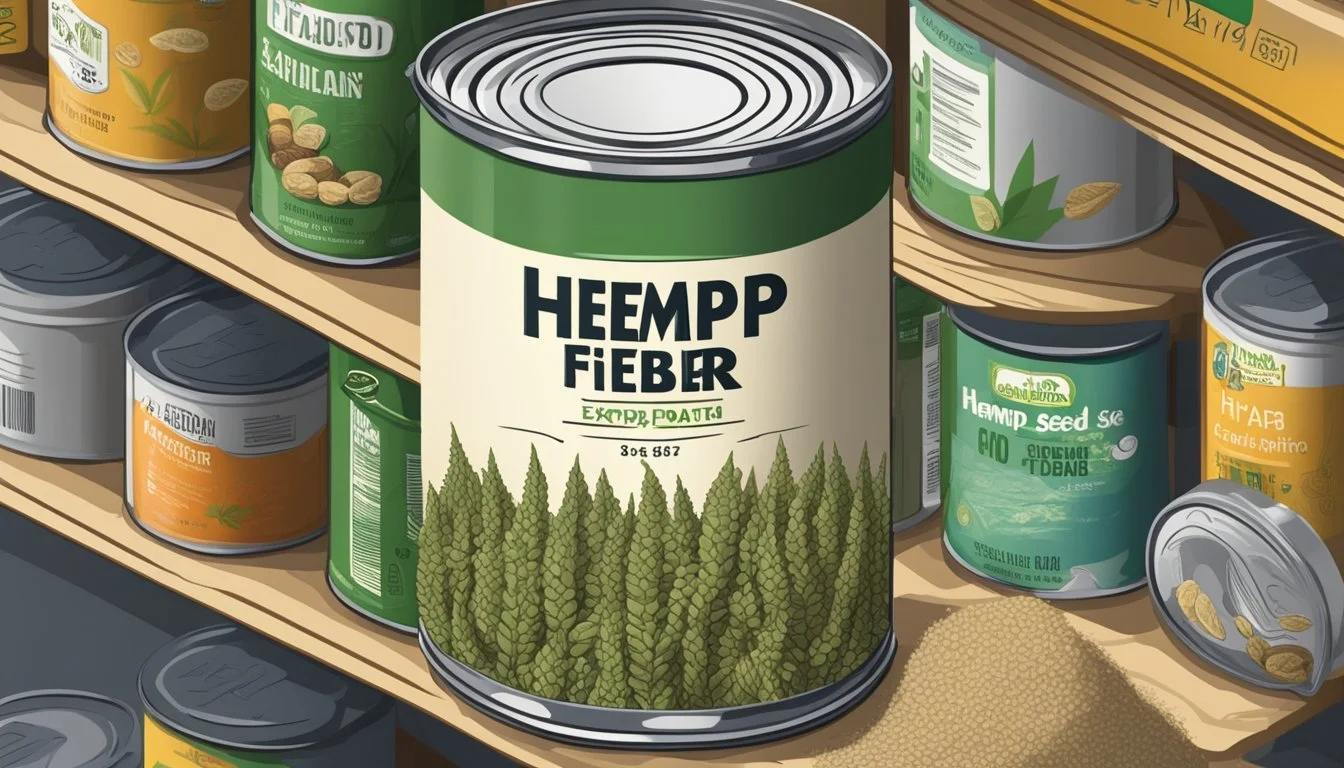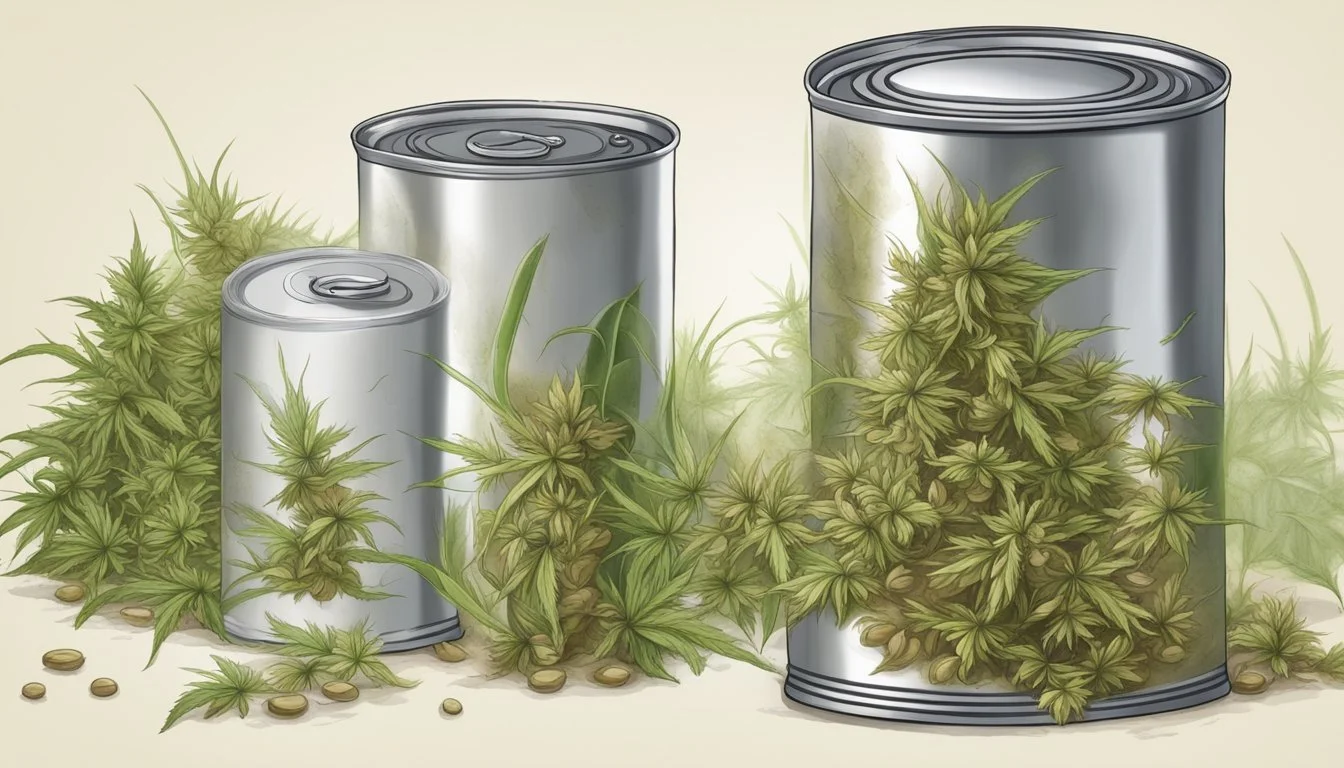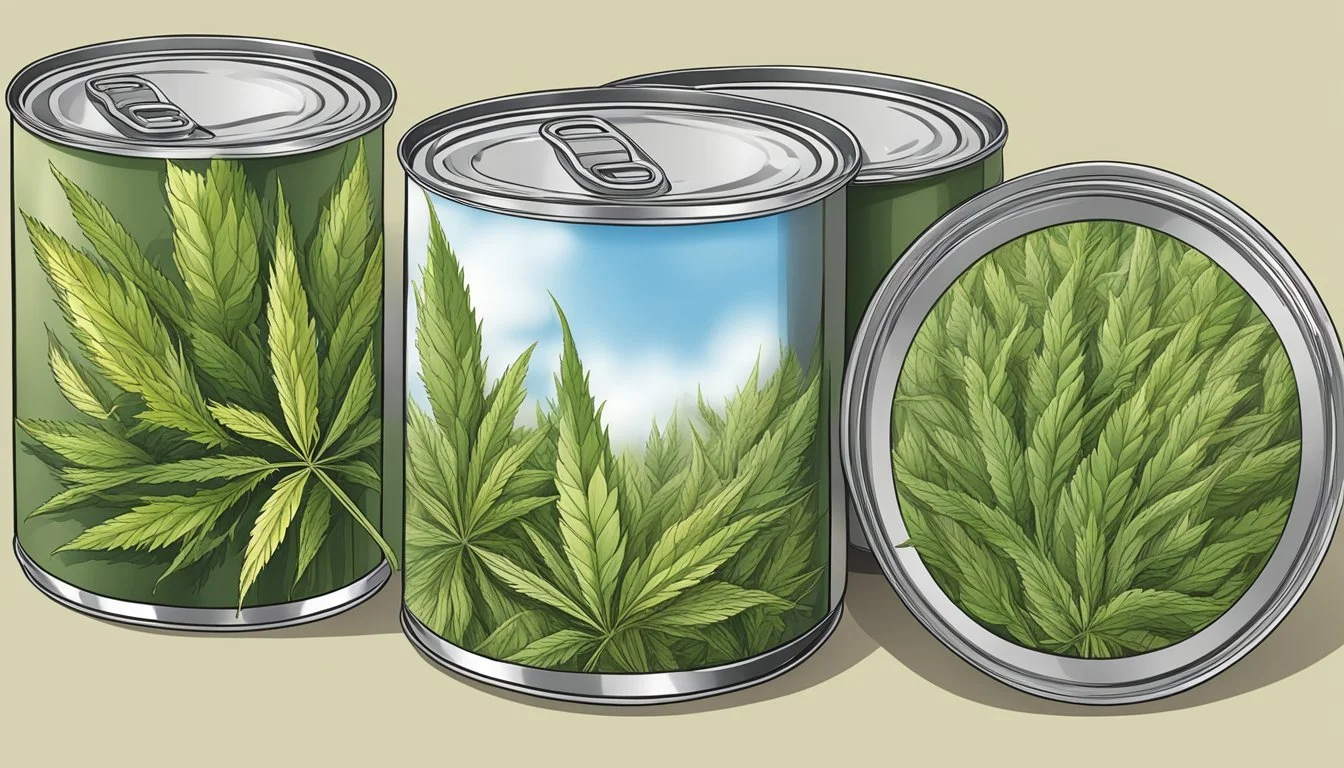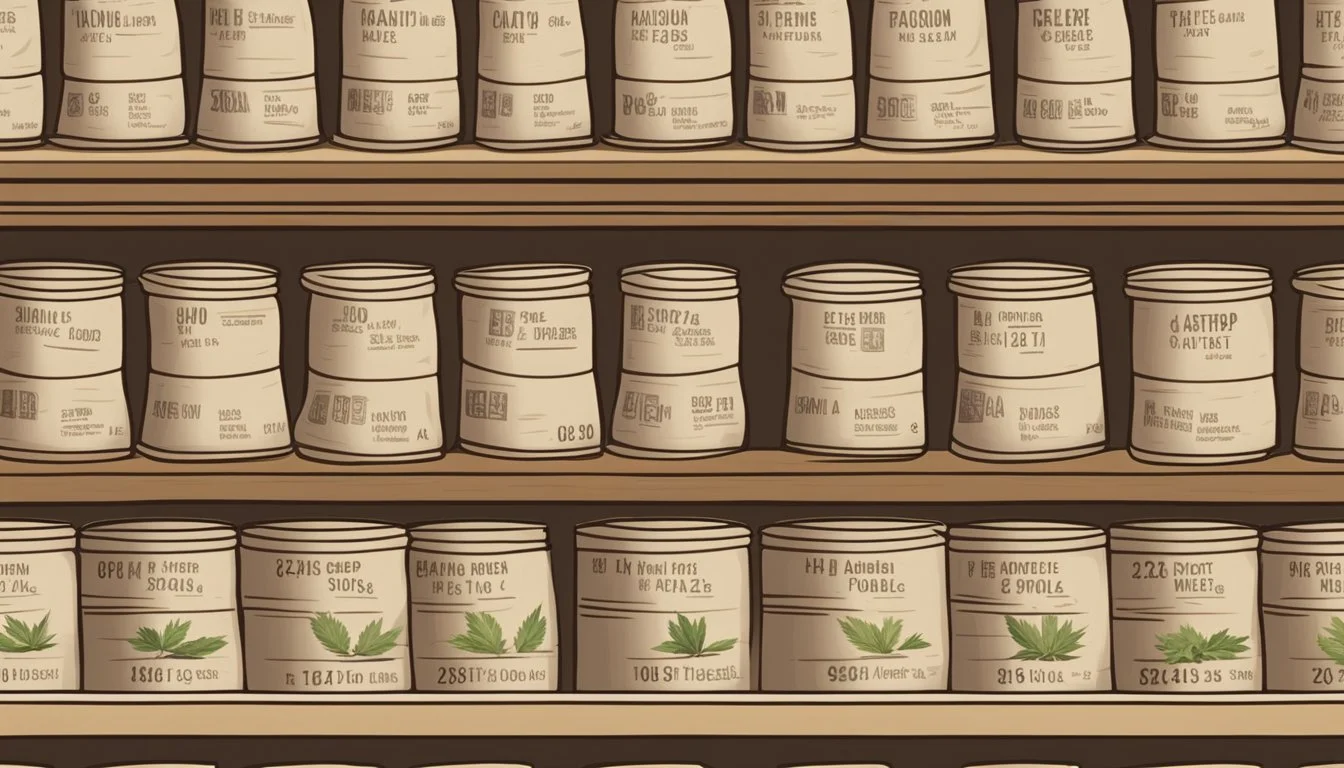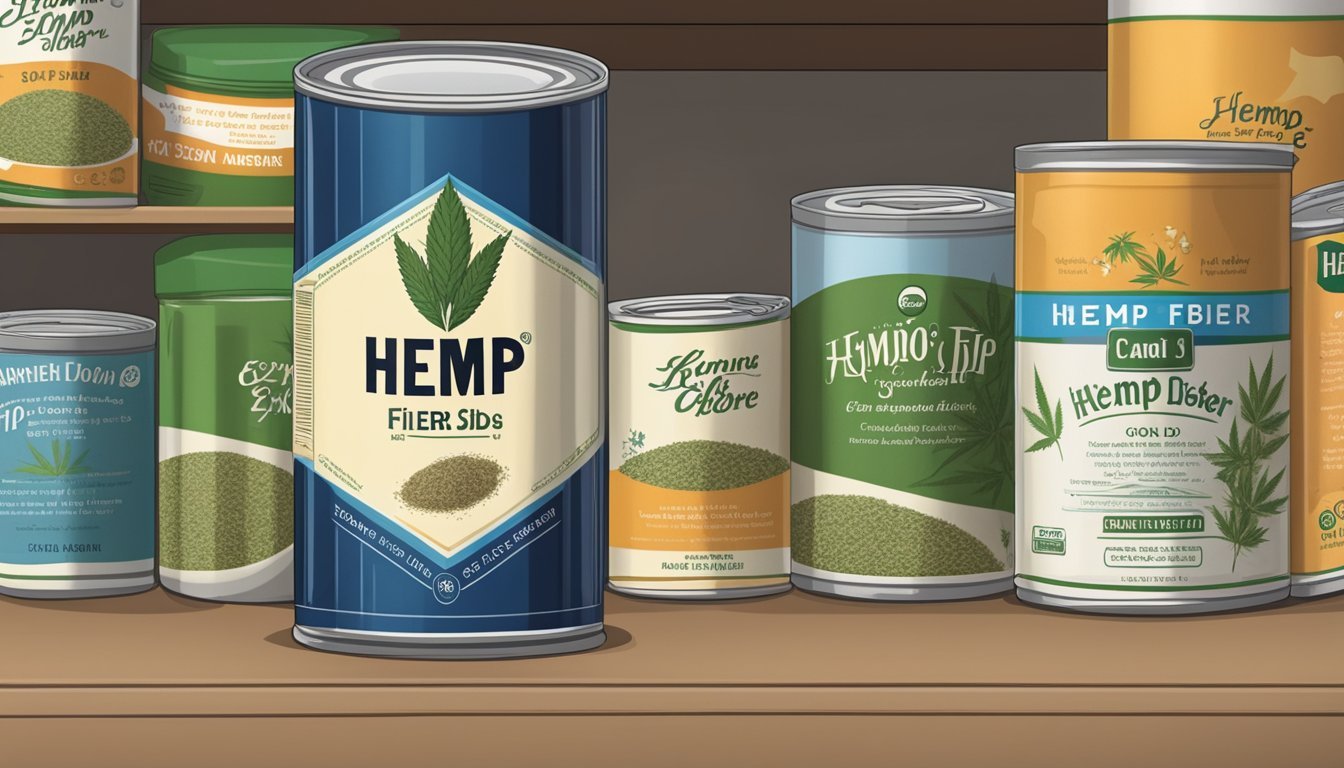How Long Does Canned Hemp Seed Fiber Last?
Understanding Shelf Life and Storage
Canned hemp seed fiber is a durable, nutritious addition to many pantries, offering a source of plant-based protein and essential fatty acids. The shelf life of canned hemp seed fiber is an important consideration for consumers looking to maintain the quality and nutritional benefits of the seeds over time. While hemp seeds are naturally resilient, the process of canning them aims to prolong their freshness and make them a staple that can withstand the test of time.
When storing canned hemp seed fiber, it's essential to consider the environment in which they are kept. Proper storage can significantly extend the usable life of the seeds, preserving their inherent quality. Factors like temperature, moisture, and exposure to light play a crucial role in determining the longevity of hemp seeds in their canned form.
Quality preservation is paramount, as the nutritional content of hemp seed fiber—rich in protein, fiber, and healthy fats—should remain intact for consumers to reap the benefits. The shelf life of canned hemp seed fiber generally exceeds that of their non-canned counterparts due to the sealed environment which protects them from external elements. Storing the cans in a cool, dark place can help ensure that the hemp seeds retain their nutritious profile for an extended period.
Understanding Hemp Seed Fiber
Hemp seed fiber, derived from the Cannabis sativa plant, is recognized as a nutritious component of the hemp seed, praised for its high content of dietary fiber, essential fatty acids, and various vitamins and minerals. It contributes to overall gut health and metabolic functions.
Nutritional Profile of Hemp Seed Fiber
Hemp seed fiber is primarily known for its dietary fiber content, beneficial for digestive health. On the topic of phytonutrients, it stands out with a notable amount of protein, making it a substantial addition to the diet for its amino acids, which are vital for muscle repair and enzyme functions.
Protein: A good source of plant-based protein
Fat: Contains a healthy balance of essential fatty acids
Fatty Acids: Ideal ratio of omega-6 to omega-3
Minerals: Rich in magnesium, phosphorus, potassium, and iron
Vitamins: Supplies vitamins such as A, B, C, and E
Types of Hemp Seed Products
Hemp seed products come in various forms, two of the most common being shelled (hulled) and unshelled (whole) hemp seeds. Each type offers a different shelf life and nutritional aspects that cater to diverse dietary needs and storage preferences.
Last about 3-4 months at room temperature; 6-12 months when refrigerated
Higher concentration of fats and protein due to the removal of fiber-rich shell
Unshelled Hemp Seeds:
Last 6-12 months at room temperature; can extend to 12-18 months when refrigerated
Retain most of their fiber along with healthy fats and protein
Factors Affecting Hemp Seed Fiber Shelf Life
The shelf life of canned hemp seed fiber is influenced by storage conditions, particularly temperature, humidity, and exposure to light and air. These factors can accelerate spoilage or, if managed properly, extend the fiber's usability.
Impact of Temperature and Humidity
High temperatures and humidity levels can promote the growth of mold and bacteria in hemp seed fiber. To preserve the fiber's quality:
Temperature: Store cans at a consistent 60°F to 70°F to ensure longevity.
Humidity: Keep relative humidity around 50% to prevent moisture accumulation.
Light and Exposure to Air
Light and air can degrade the nutritional quality of hemp seed fiber through oxidation:
Light: Minimize exposure to sunlight. Store in a dark location where light is limited.
Air: Once opened, limit the fiber's contact with air to prevent oxidative spoilage.
Packaging and Airtight Containers
Canned hemp seed fiber's longevity is also tied to its packaging:
Packaging: Opt for cans with no damage to the seal or structure.
Airtight Containers: After opening, transferring the fiber to an airtight container can extend its shelf life by reducing oxygen exposure.
Storing Hemp Seed Fiber
Proper storage is critical for maintaining the quality and extending the shelf life of canned hemp seed fiber. By understanding and implementing the right storage techniques, one can ensure that the benefits of this fiber-rich product are preserved.
In the Pantry
For unopened cans of hemp seed fiber, the pantry is a suitable storage space. The pantry should be a cool, dry place that maintains a consistent room temperature. Such conditions help prevent degradation and preserve the fiber's nutritional quality until the expiration date.
Refrigeration and Freezing
Once opened, transferring the leftover hemp seed fiber to an airtight container is recommended to maintain freshness. The container can be stored in the refrigerator, where it will be kept at a cool temperature, extending its usability. For prolonged shelf life, freezing is also an option. When frozen, the fiber should be in a sealed container to prevent freezer burn and absorb flavors from other foods.
Refrigerated: Store in an airtight container; hemp seed fiber can last in the fridge for a few months.
Frozen: Sealed tightly, hemp seed fiber can be used for up to a year.
Best Practices for Long-Term Storage
For long-term storage, it is imperative to be mindful of the container and storage conditions. Canned hemp seed fiber, whether unopened or transferred to airtight containers, should be kept away from heat sources and light to prevent the oils within the hemp seeds from becoming rancid.
Containers: Always use airtight containers to prevent moisture and air exchange.
Location: Choose a cool, dark spot in the pantry, refrigerator, or freezer depending on when you plan to use the fiber.
Signs of Spoilage and Rancidity
When assessing whether canned hemp seed fiber is still good to use, it is essential to recognize signs of spoilage and rancidity. These indicators help ensure the hemp seed fiber is safe and retains its nutritional value.
Identifying Rancid Hemp Seed Fiber
The onset of rancidity in hemp seed fiber is primarily due to the fats within the seeds breaking down into free radicals and other compounds, affecting the product's quality. Signs include:
Smell: A distinct, off-putting smell akin to old cooking oil signals rancidity.
Discoloration: Visible changes or a discolored appearance can imply spoilage.
Changes in Taste, Smell, and Texture
Spoiled canned hemp seed fiber demonstrates:
Taste: Bitterness or an unpleasant taste often accompanies rancid seeds.
Texture: The fiber should feel dry and firm; if it's unusually sticky or damp, it may be spoiled.
Smell: A consistent, nutty aroma is expected; any sour or rancid smell suggests it should not be consumed.
Using Hemp Seed Fiber in Foods
Hemp seed fiber is a versatile ingredient that can enhance the nutritional value and add a unique nutty flavor to various foods. This section explores how to integrate hemp seed fiber into smoothies and salads, as well as how to incorporate it into baked goods.
Integrating into Smoothies and Salads
For an easy nutritional boost, one can add hemp seed fiber to smoothies and salads. In smoothies, a spoonful of hemp seed fiber blends seamlessly, contributing a slight nuttiness without overpowering the other flavors. It pairs well with fruits, greens, and yogurt, making the smoothie more satisfying and fiber-rich. Similarly, when sprinkled over salads, hemp seed fiber enhances the texture and adds essential nutrients. It complements both sweet and savory dressings and can be mixed with various salad ingredients such as leafy greens, chopped vegetables, and nuts.
Baking with Hemp Seed Fiber
Integrating hemp seed fiber into baked goods is an effective way to improve their nutritional content. When baking, one can substitute a portion of the regular flour with hemp seed fiber to infuse a nutty flavor and additional fiber. This substitution works well in recipes for bread, muffins, and other pastries. Additionally, the fiber helps to create a denser, more satisfying product that can aid in digestion and provide a steadier release of energy.
Health Benefits of Hemp Seed Fiber
Hemp seed fiber is a valuable component of hemp seeds, known for its richness in essential nutrients and its role in promoting healthy digestion and heart health.
Essential Nutrients and Healthy Fats
Hemp seed fiber contains a notable concentration of essential fatty acids, including omega-3 and omega-6, which are crucial for maintaining overall health. These healthy fats are not synthesized by the human body and must be obtained through diet. Hemp seeds provide a balanced ratio of these fats, which supports various bodily functions.
Omega-3 fatty acids: Help to reduce inflammation and are vital for brain health.
Omega-6 fatty acids: Involved in cellular growth and promoting skin and hair health.
In addition to these fats, hemp seed fiber is also a source of vitamin E, a potent antioxidant that protects the body's cells from oxidative stress.
Supporting Digestion and Heart Health
The fiber in hemp seeds aids in digestion by promoting regular bowel movements and preventing constipation. A well-functioning digestive system is essential for the absorption of nutrients and maintaining a healthy gut microbiome.
Dietary fiber: Aids in maintaining a healthy digestive tract and promotes satiety.
Hemp seed fiber’s content of essential fatty acids, such as EPA (eicosapentaenoic acid), also contributes to heart health. These fats can influence cardiovascular function by reducing arterial plaque and lowering blood pressure.
Heart health: The amino acid arginine, present in hemp seeds, is converted into nitric oxide, which helps blood vessels dilate and improves blood flow, reducing the risk of heart conditions.
Legality and Safety
Understanding the legal status and safety criteria of hemp products, such as canned hemp seed fiber, is essential for ensuring compliance with laws and consumer safety.
Hemp vs Marijuana
Hemp and marijuana are both part of the Cannabis sativa plant family but are distinguished by their delta-9 tetrahydrocannabinol (THC) content, the compound responsible for psychoactive effects. Hemp contains only trace amounts of THC and does not produce intoxicating effects. Countries like Canada have legalized hemp cultivation with specific regulatory requirements.
THC Content and Industrial Hemp
Industrial hemp is legally defined by its THC content. For a cannabis plant to be classified as hemp, it must contain no more than 0.3 percent THC on a dry weight basis. This threshold ensures the crop cannot induce psychoactive effects, thus separating it from marijuana, which has higher THC levels. Industrial hemp is cultivated for its fibers, seeds, and oil, used in various products including food, textiles, and building materials.
Additional Considerations
The stability and longevity of canned hemp seed fiber are influenced by a variety of factors beyond just expiration dates. This section delves into alternative sources of plant-based nutrition and how consumer choices may impact the overall experience with hemp seed fiber.
Alternatives to Hemp Seed Fiber
Hemp seed fiber is celebrated as a superfood for its robust nutritional value, but there are other plant-based proteins and fibers that serve as alternatives. Chia seeds are comparable due to their high content of omega-3 fatty acids and antioxidants. They can be used to make flour and offer a similar shelf life. Manganese, a mineral found abundantly in hemp seeds, also features prominently in chia seeds.
Best Practices: Alternatives should be evaluated based on their shelf-life, nutrient profile, and culinary versatility.
Environmental and Consumer Information
When considering canned hemp seed fiber, consumers should pay attention to labels for cues about pesticides and storage methods. Organically grown hemp seeds are less likely to contain harmful pesticides, which can affect both the consumer's health and the product's shelf-life.
Appearance: Fresh hemp seed fiber tends to have a greenish hue and a mild, nutty scent. Discoloration or an off smell can indicate spoilage.
Storage Tips: To maximize shelf-life, consumers should store the product in cool environments. Refrigeration and freezing can extend the shelf-life. Clear information on storage, such as keeping away from high humidity and bacteria-vulnerable environments, is crucial for both consumers and retailers.
By following these additional considerations, individuals can make informed choices regarding the use and storage of hemp seed fiber and explore suitable alternatives while maintaining a focus on best practices for longevity and nutritional benefits.


